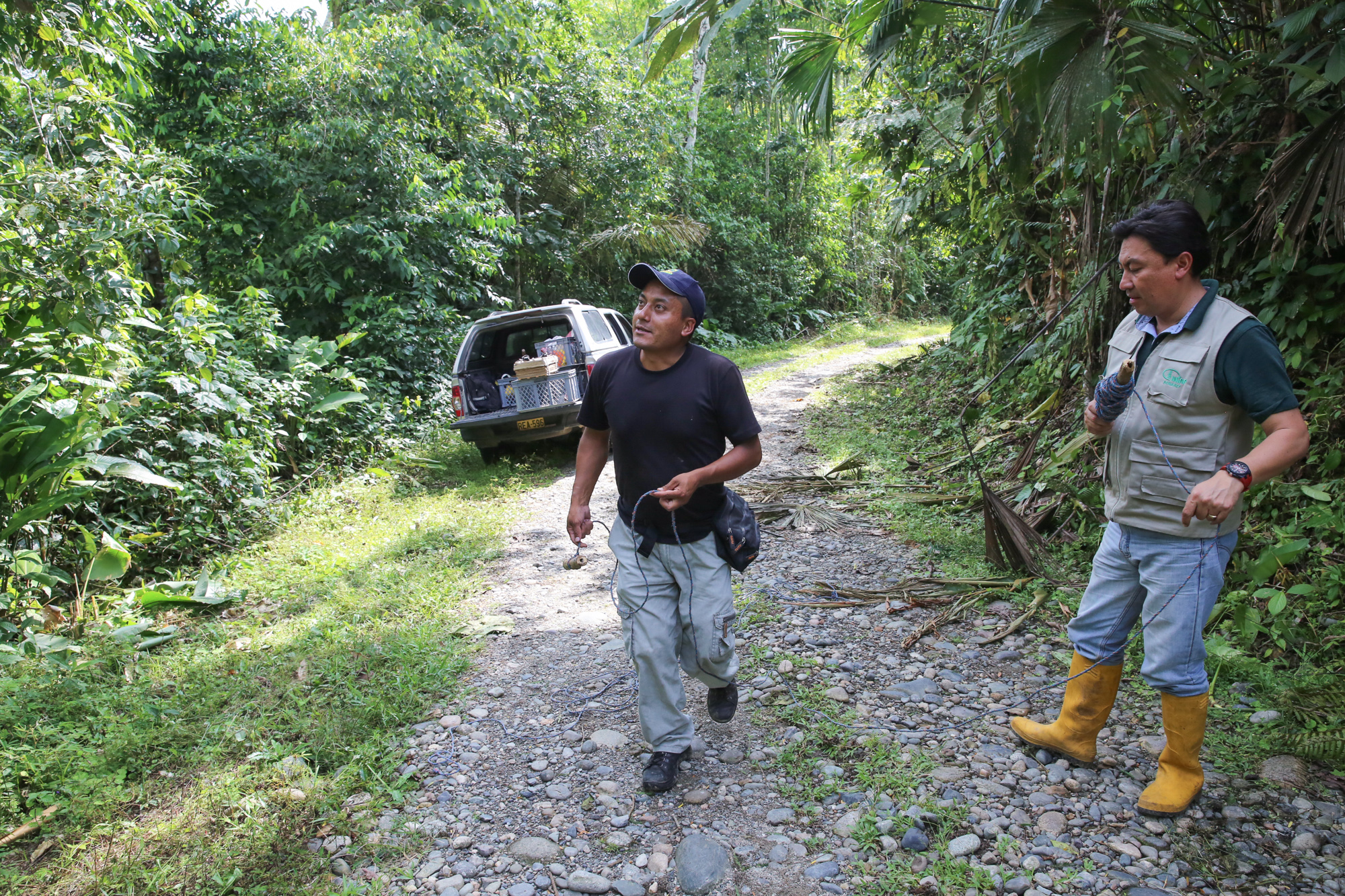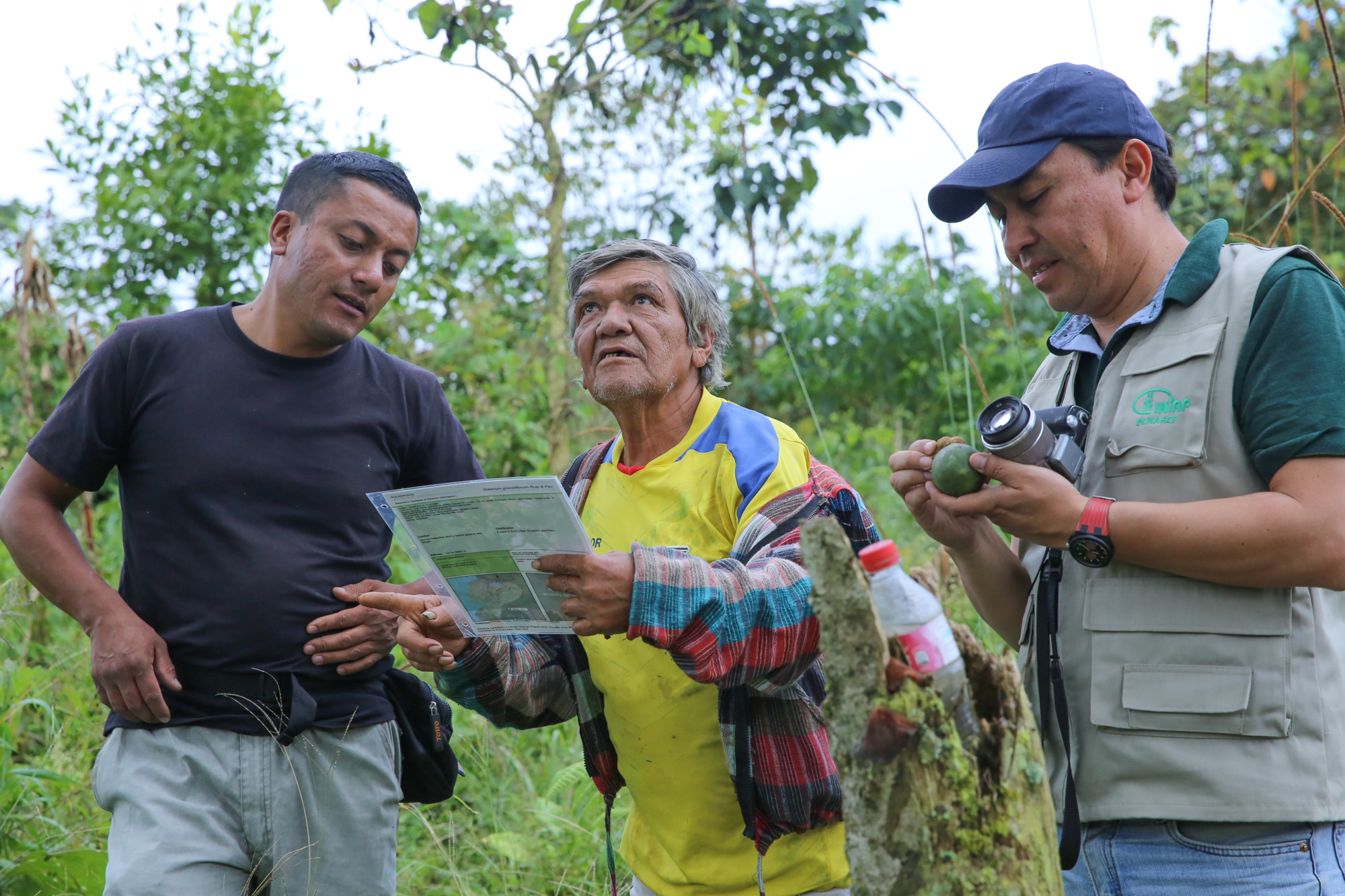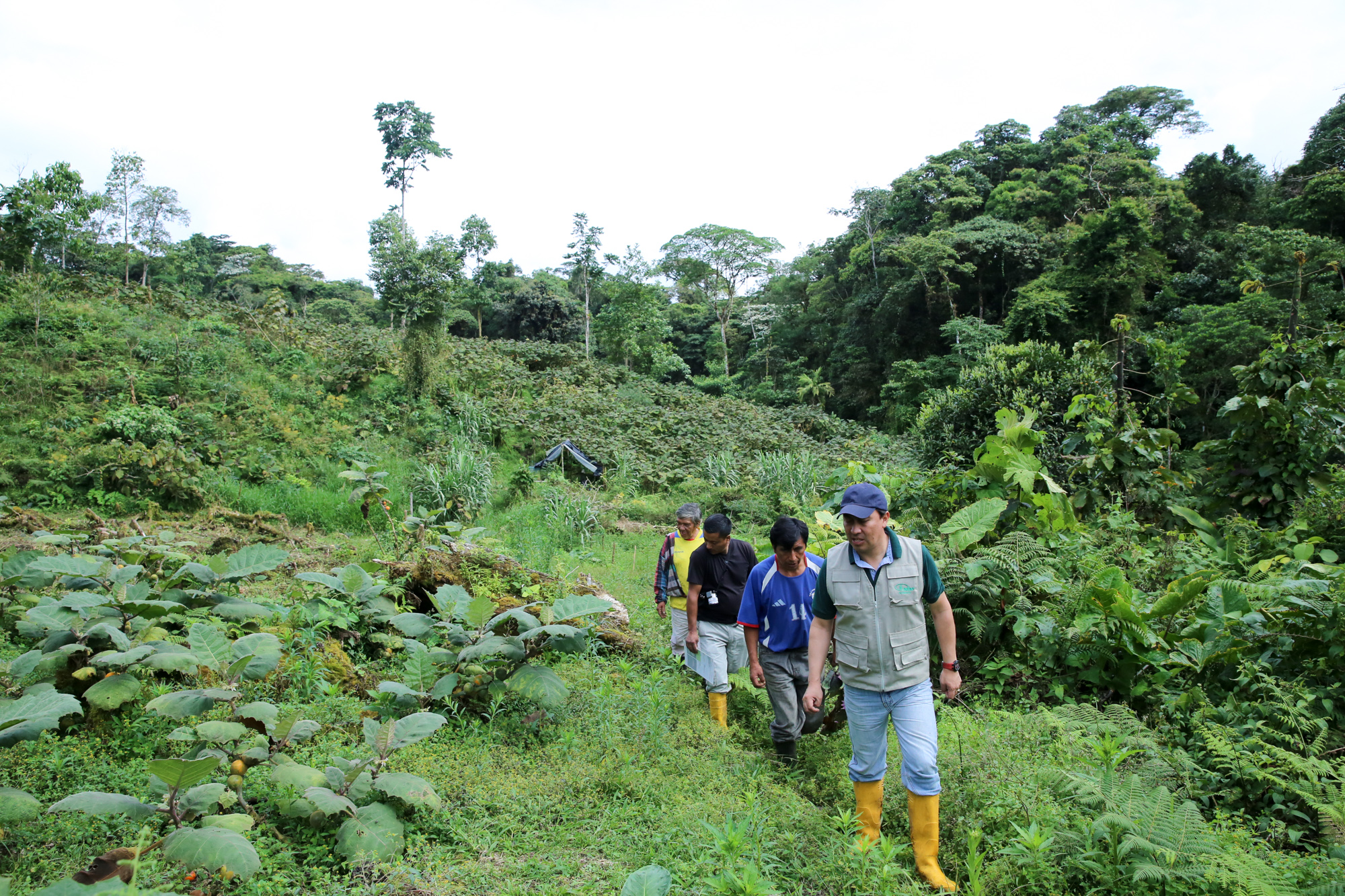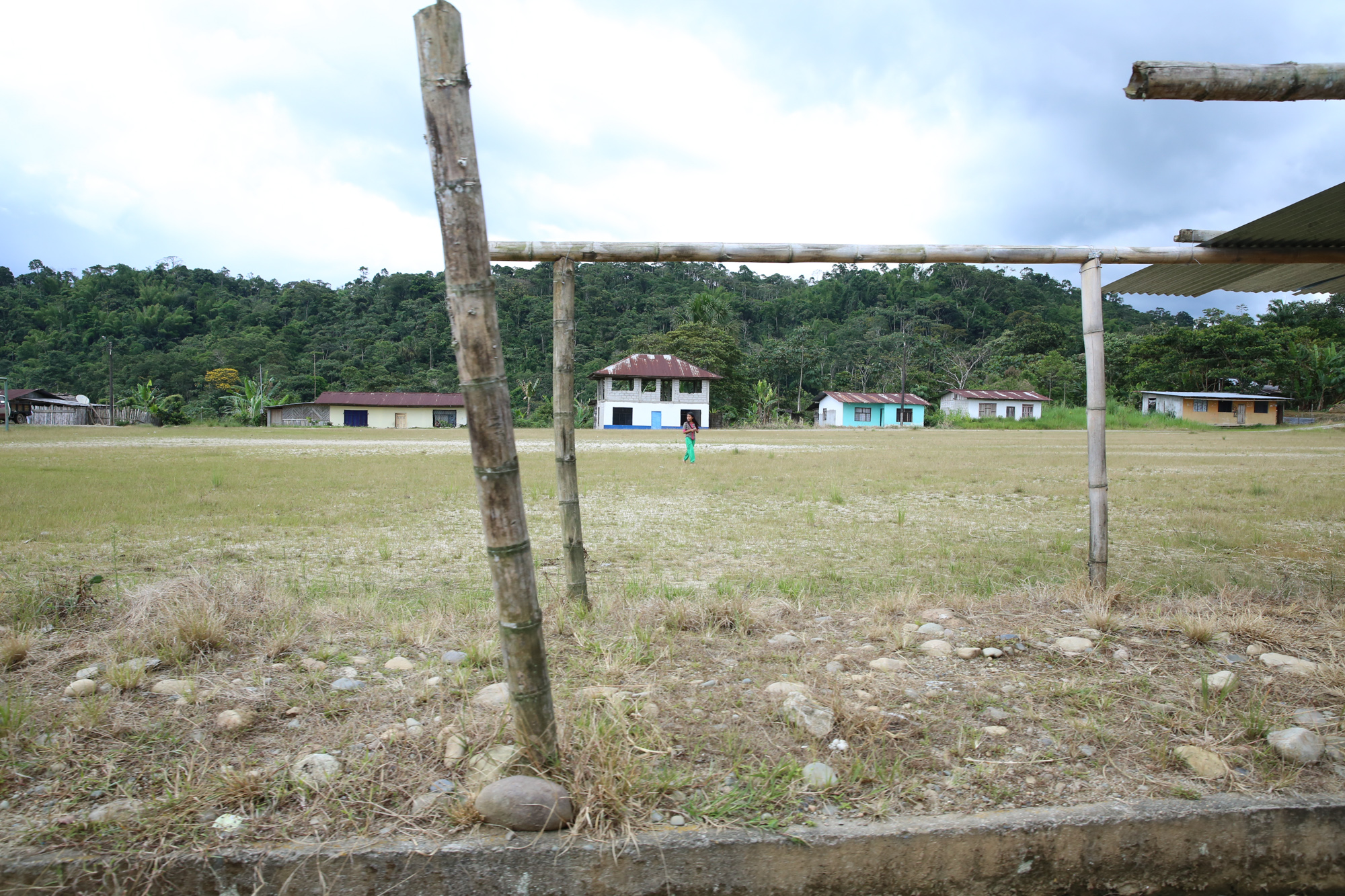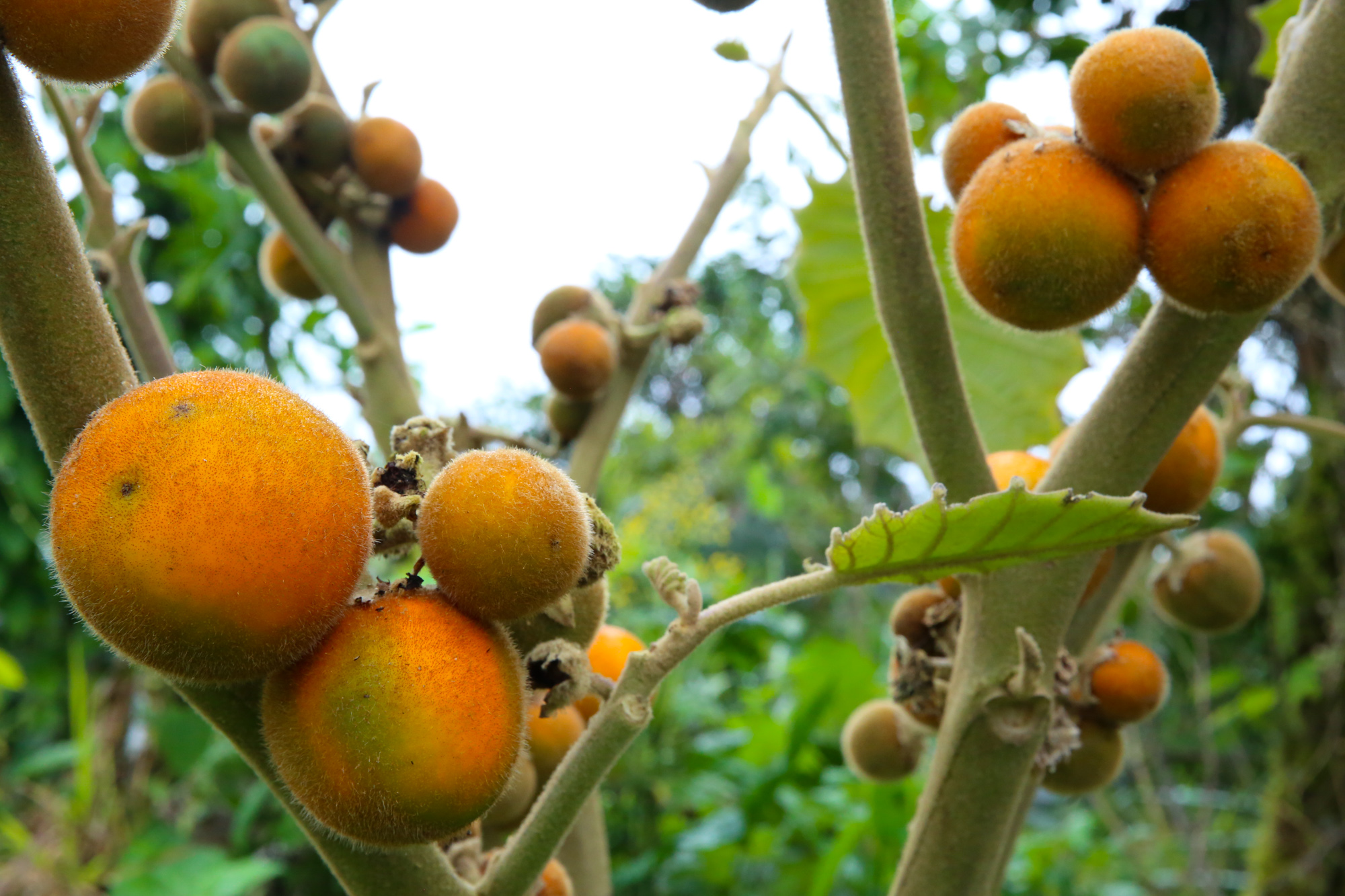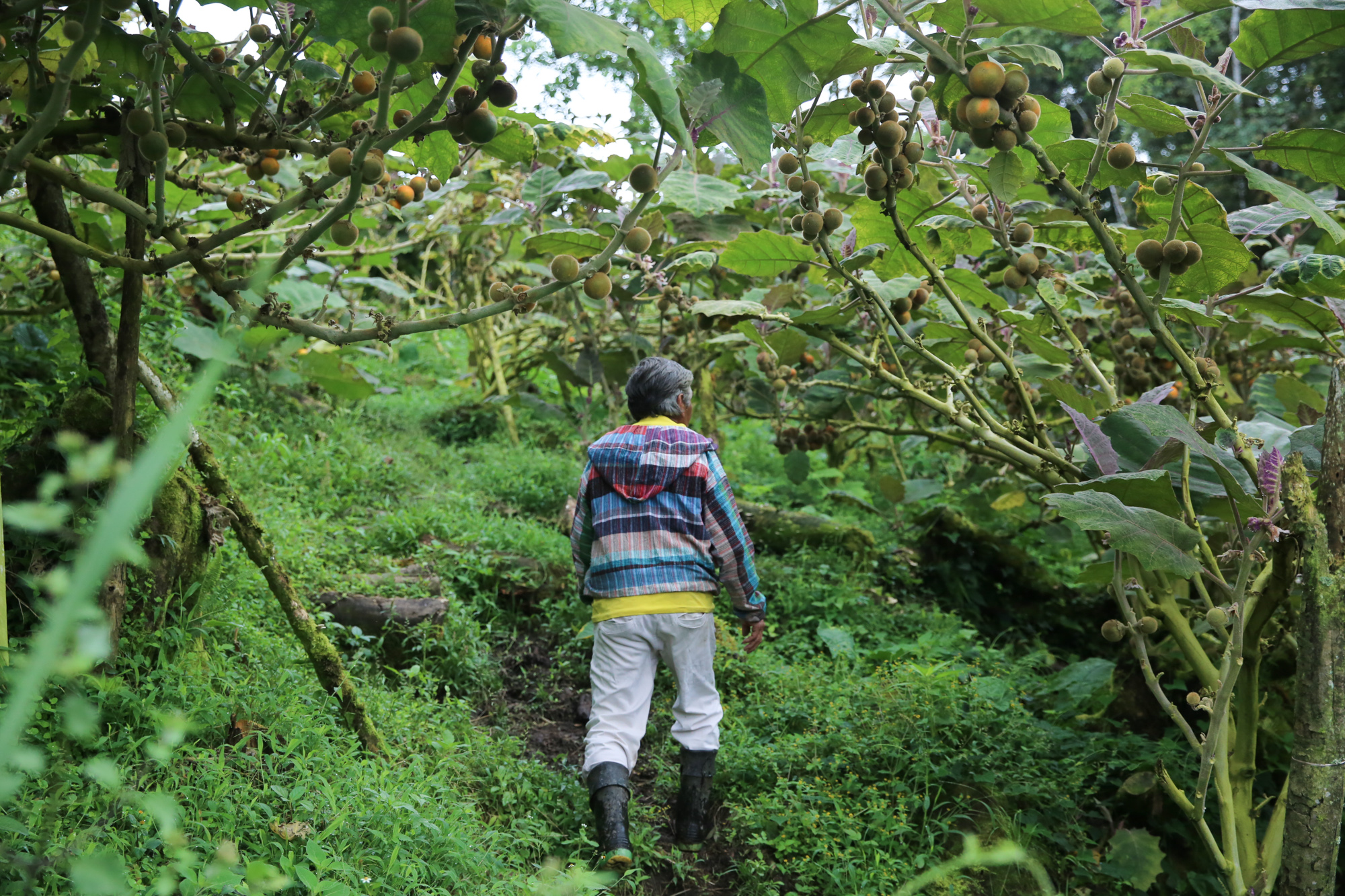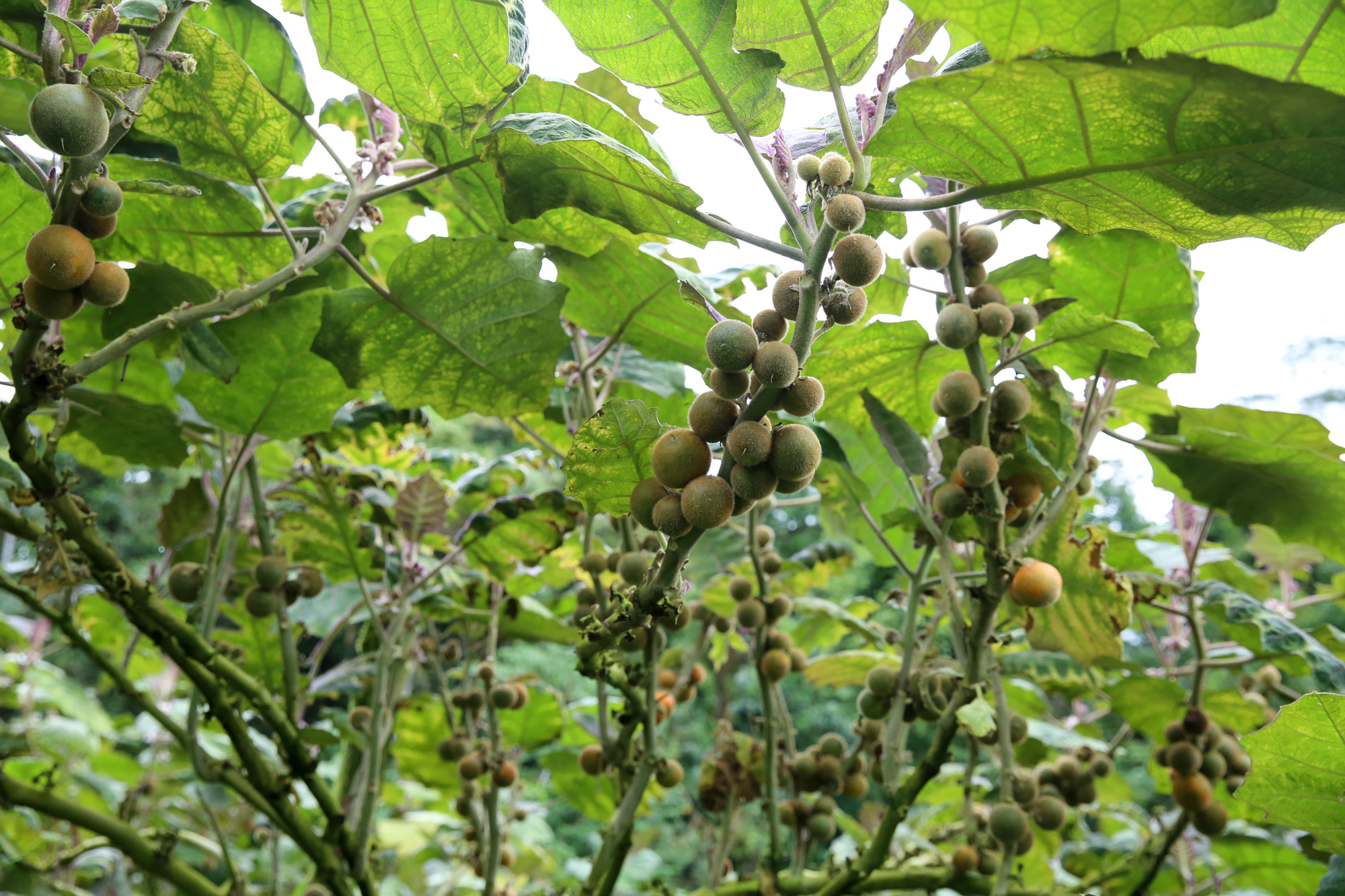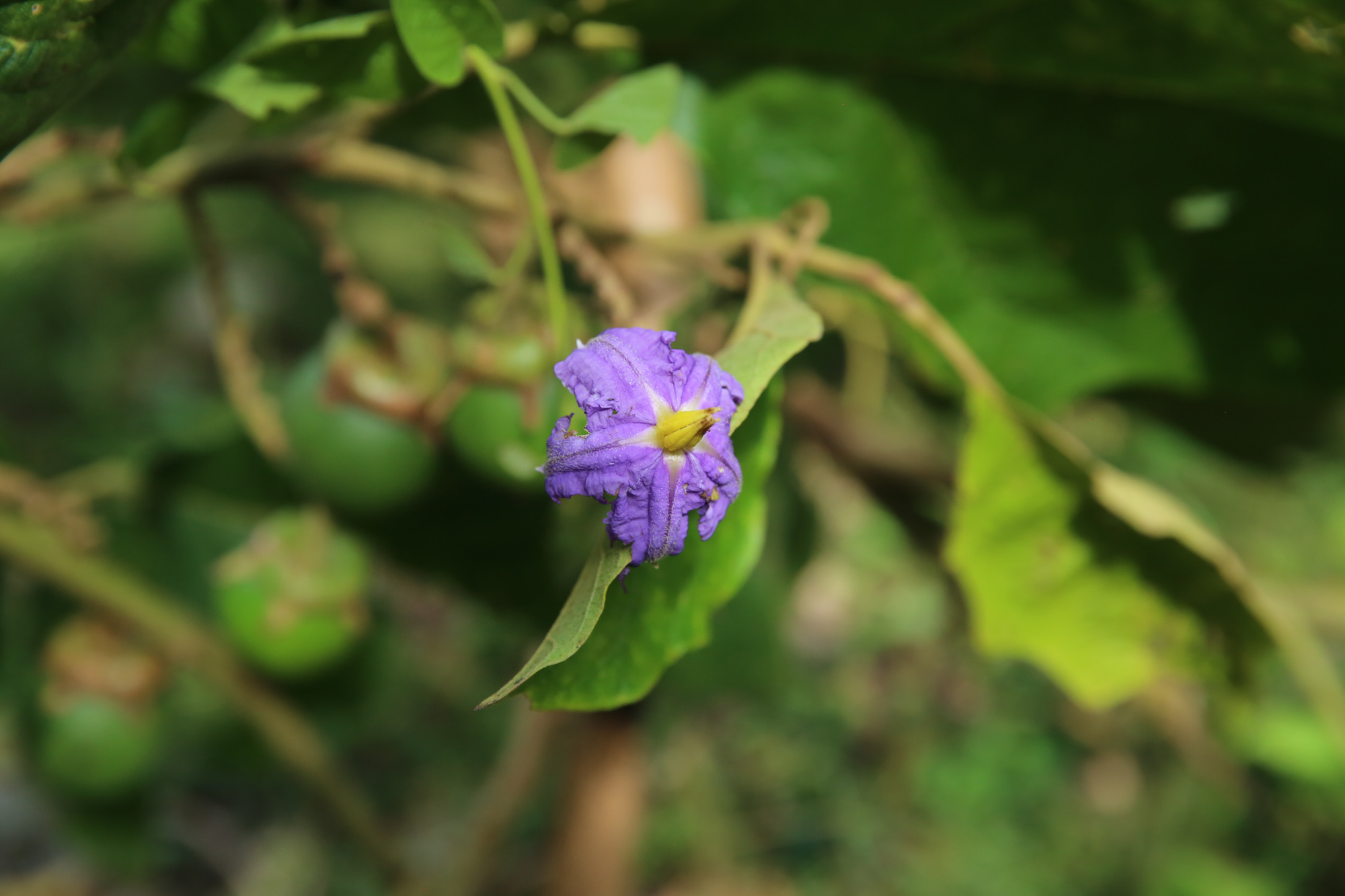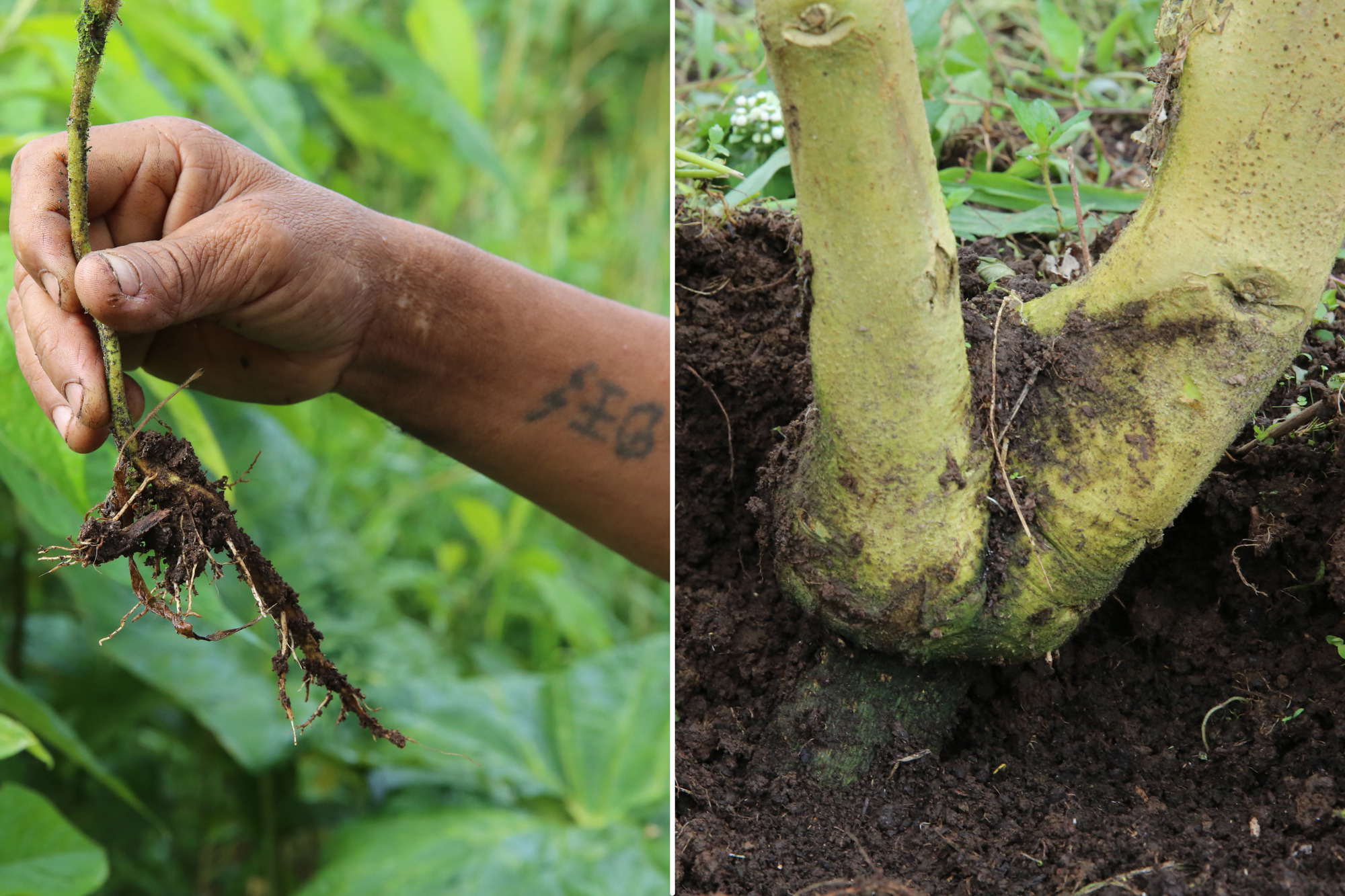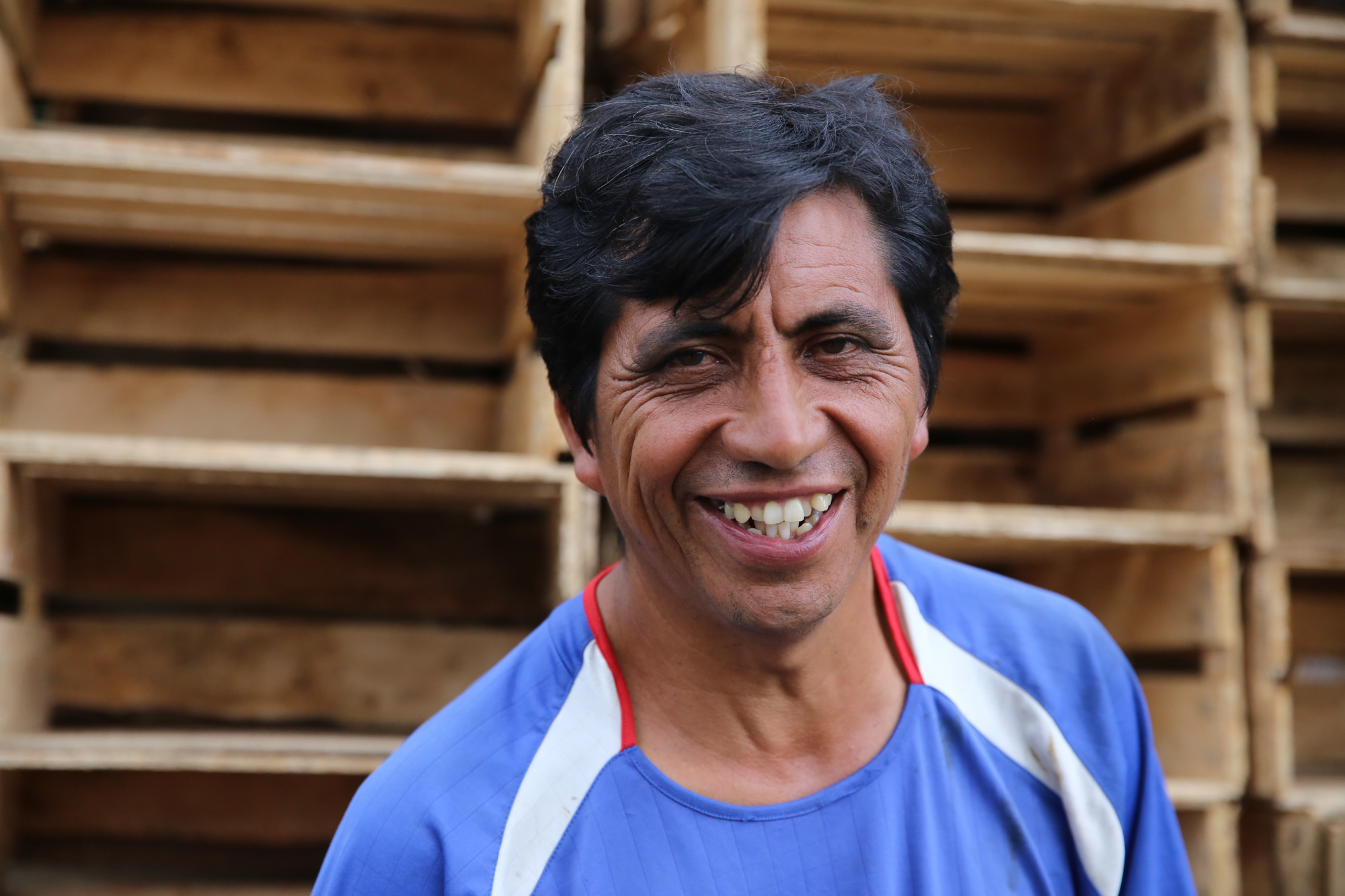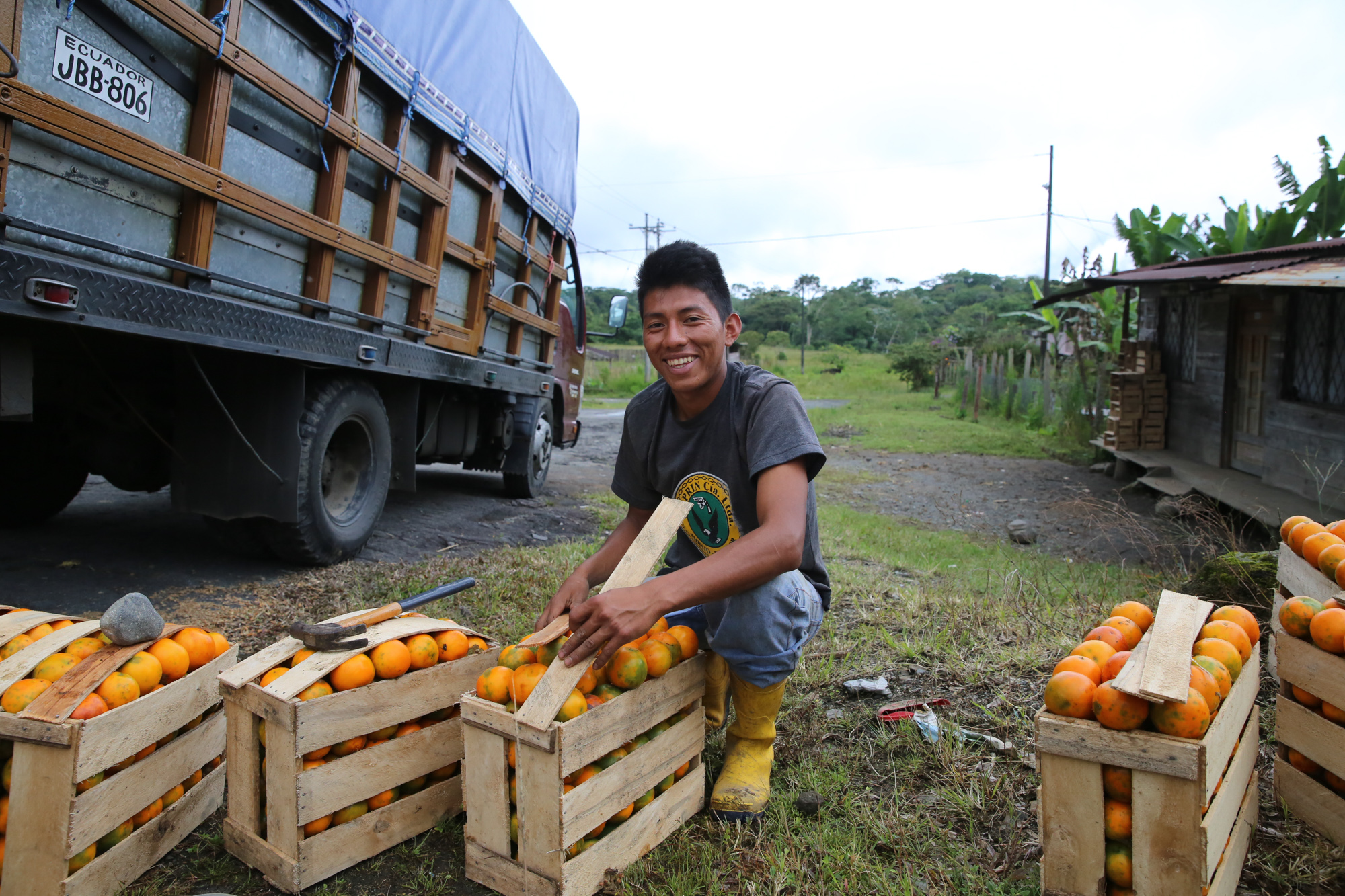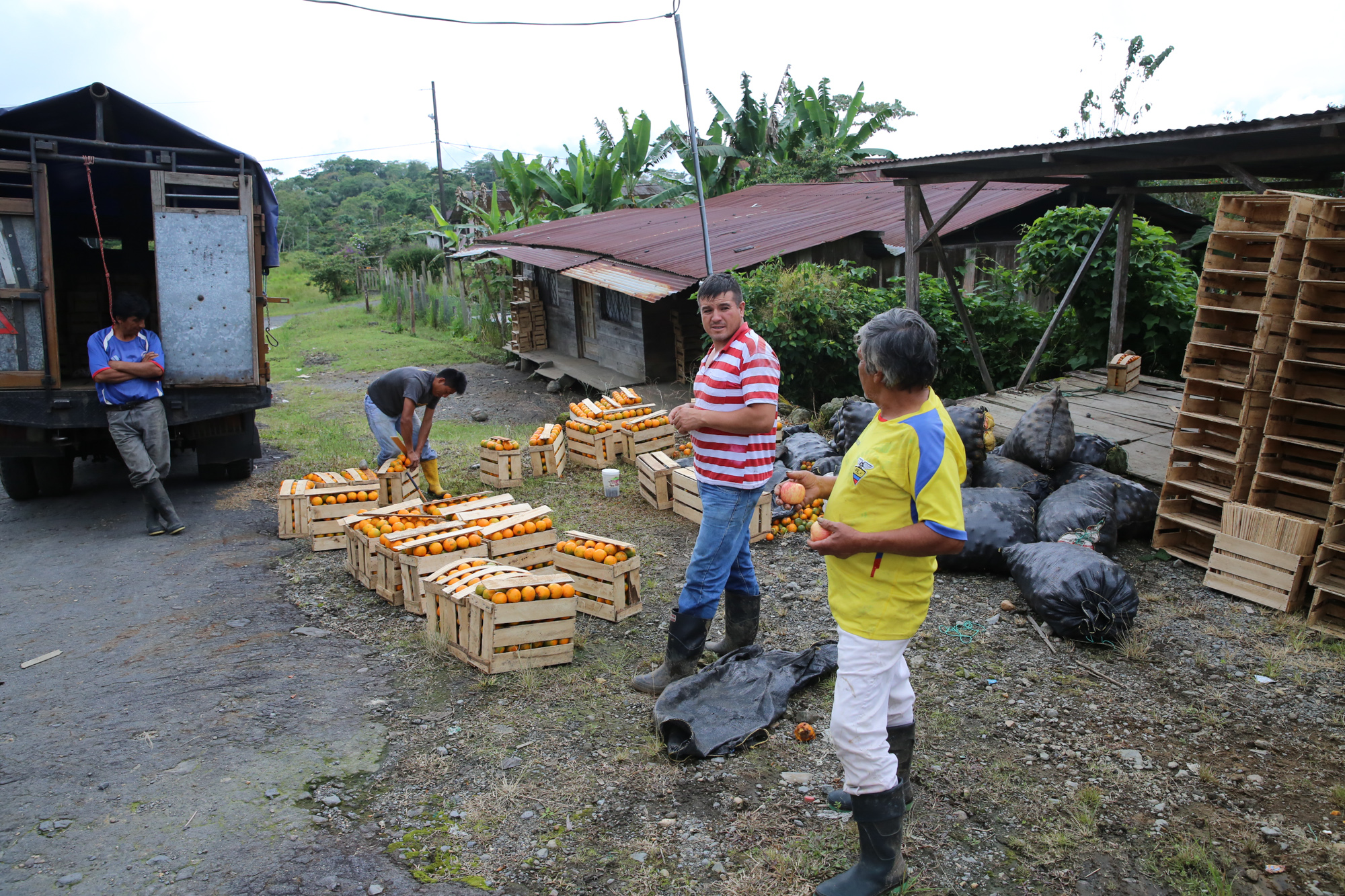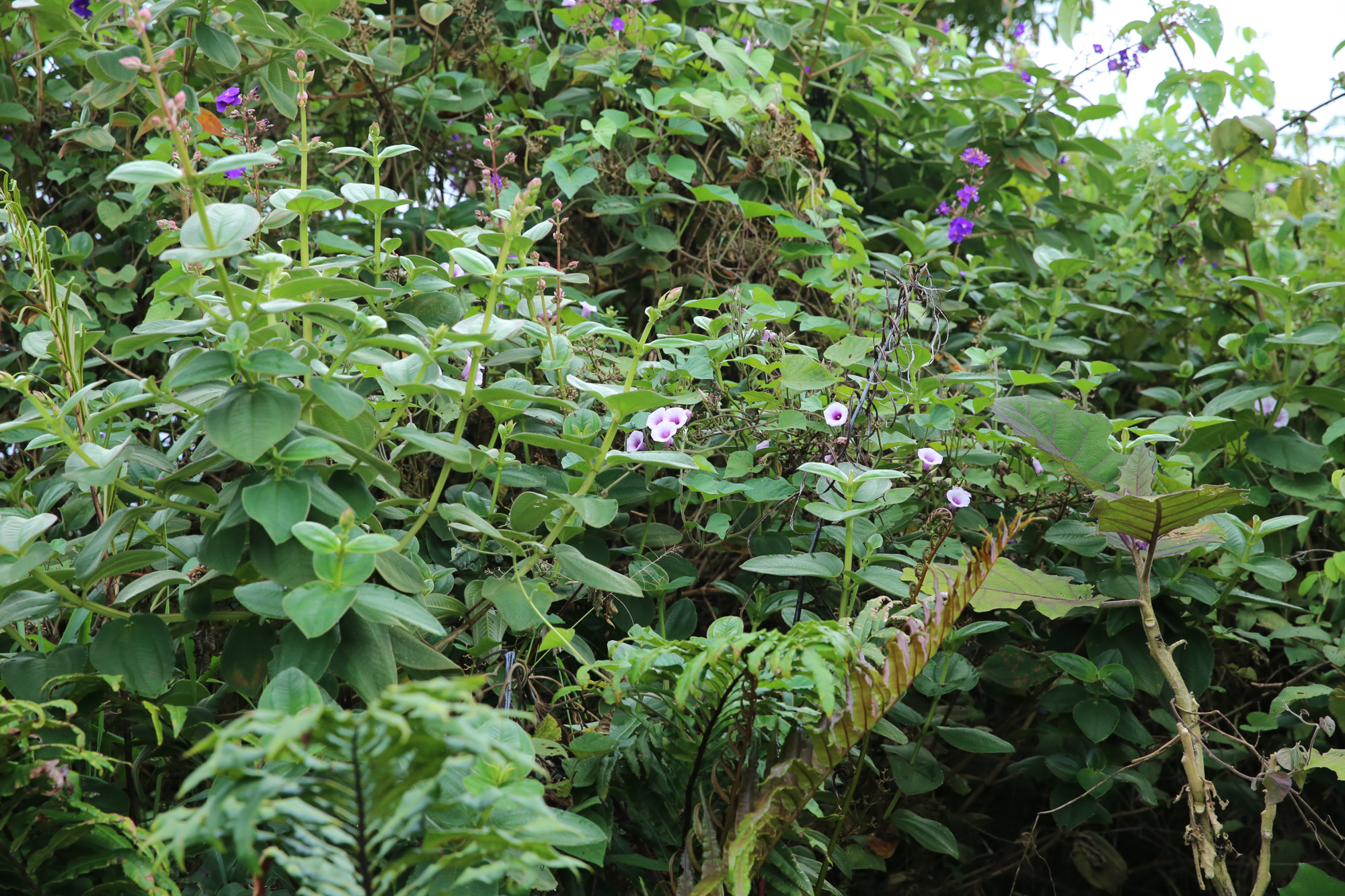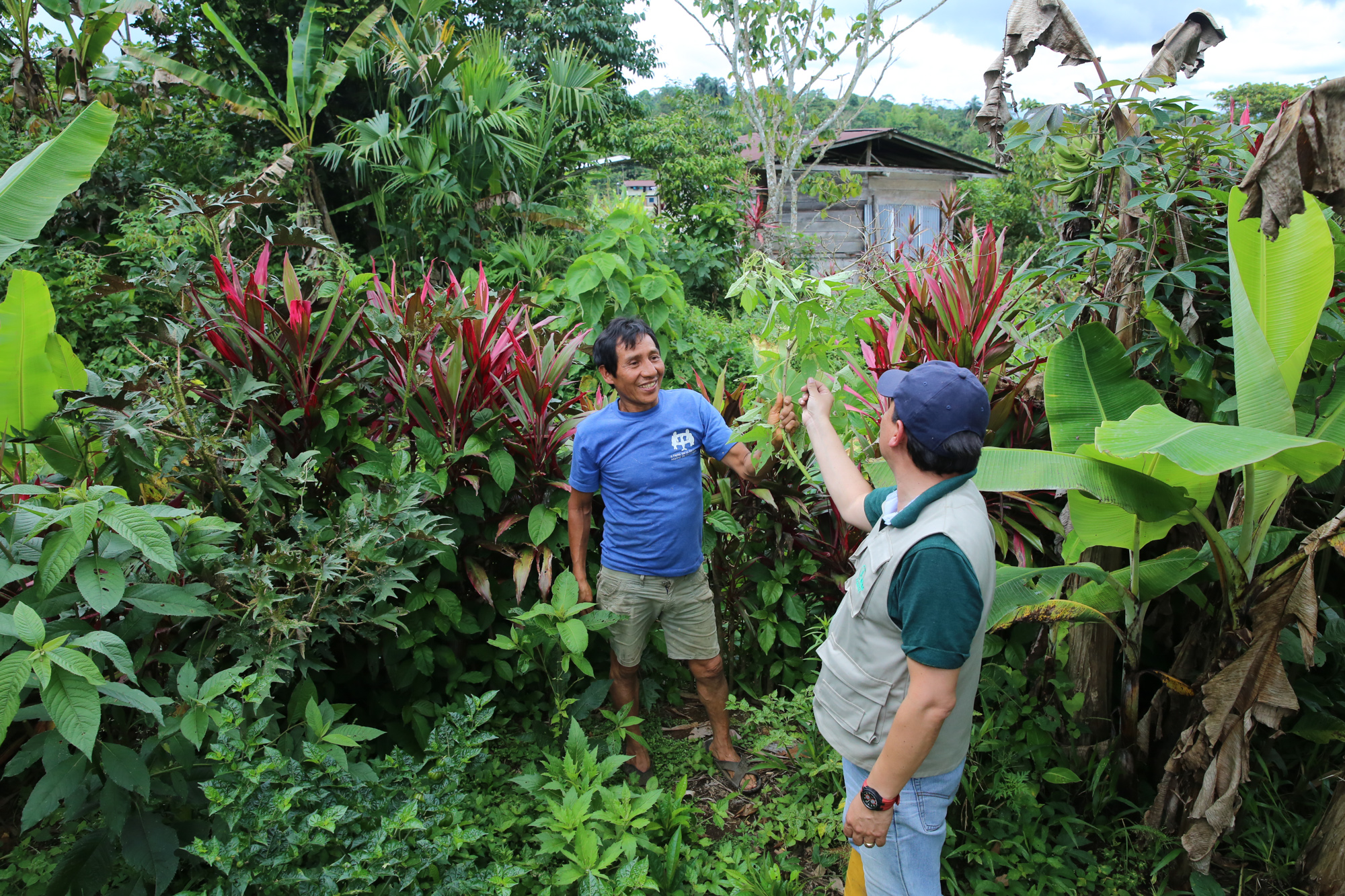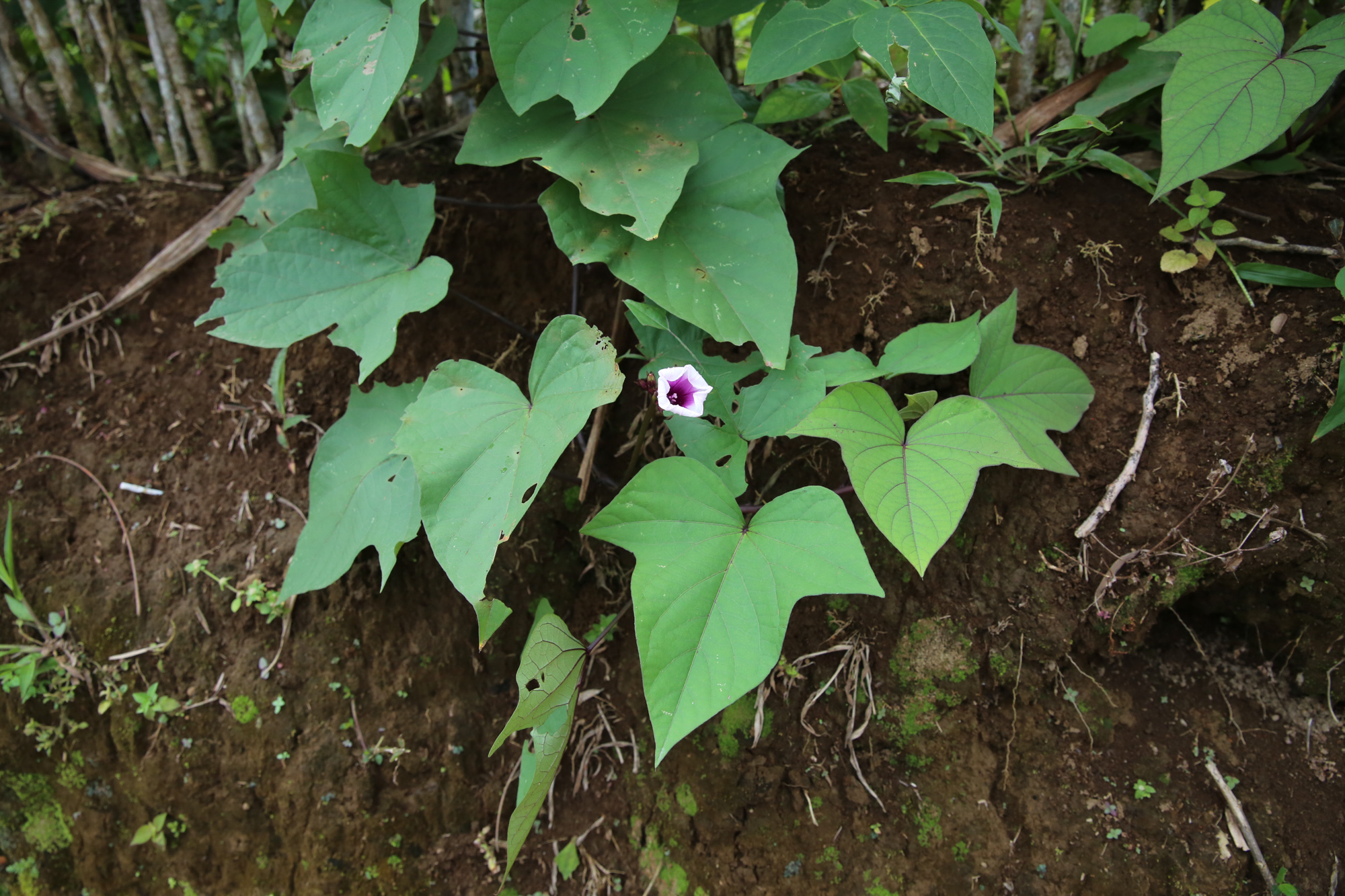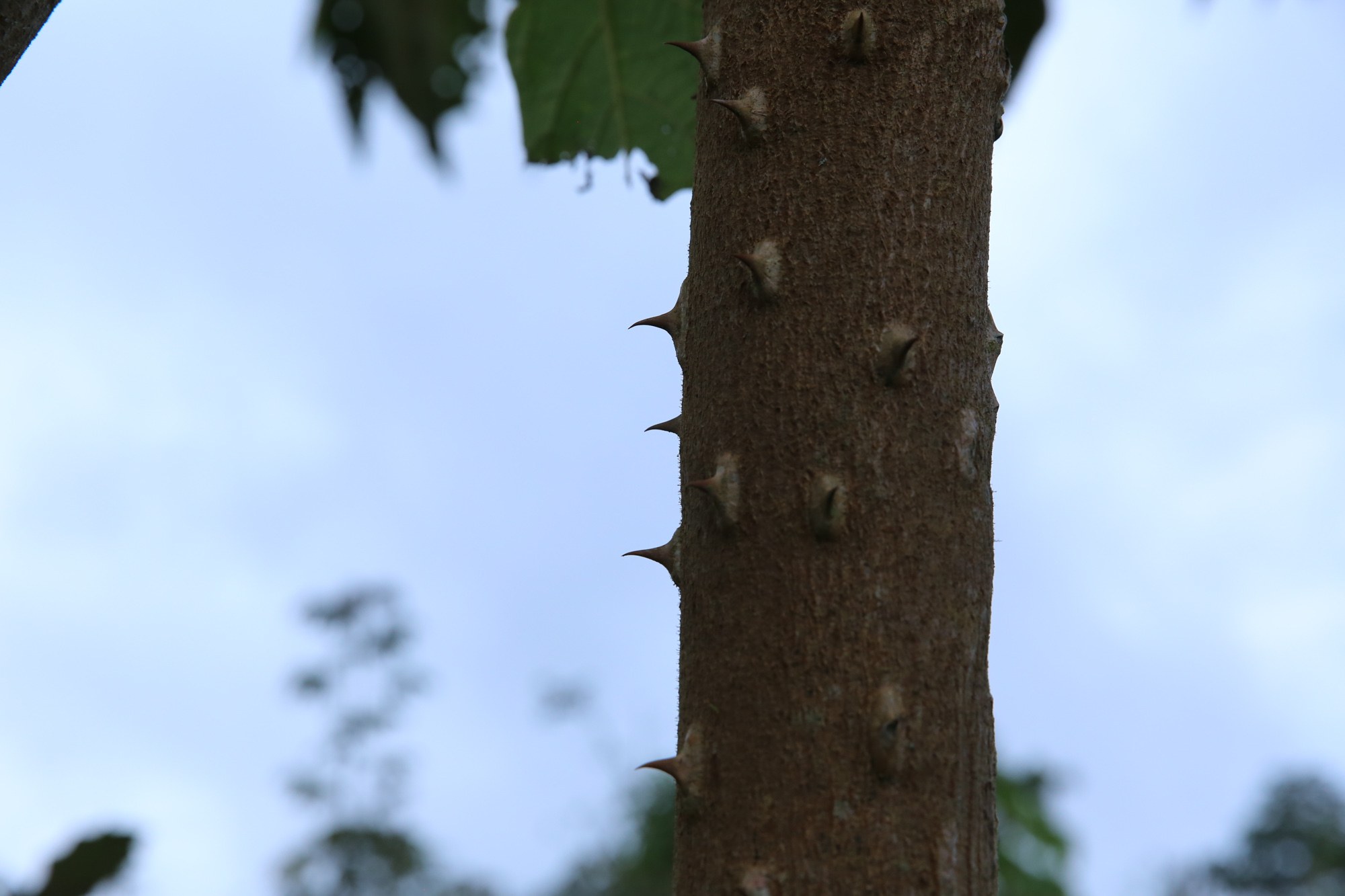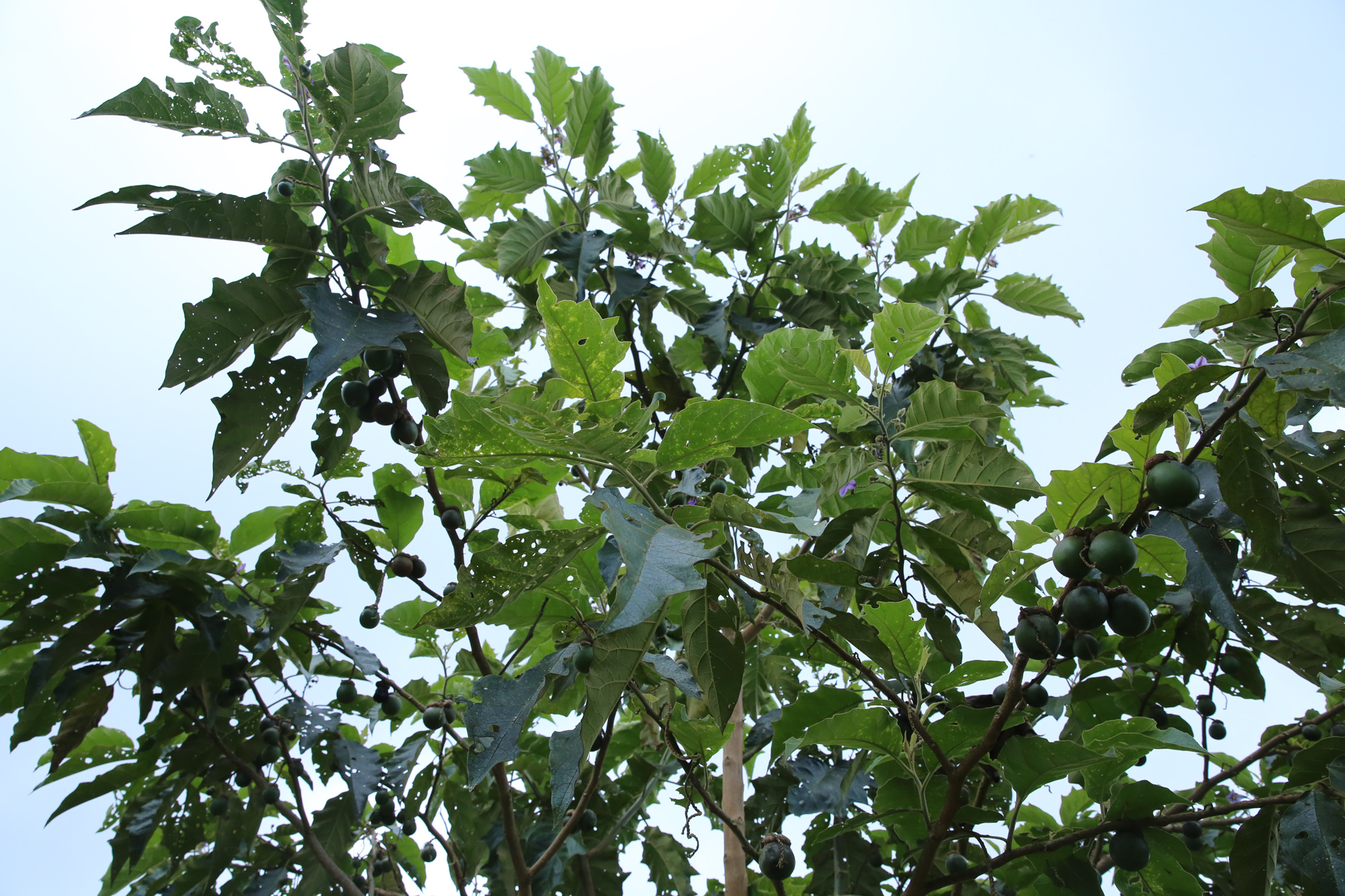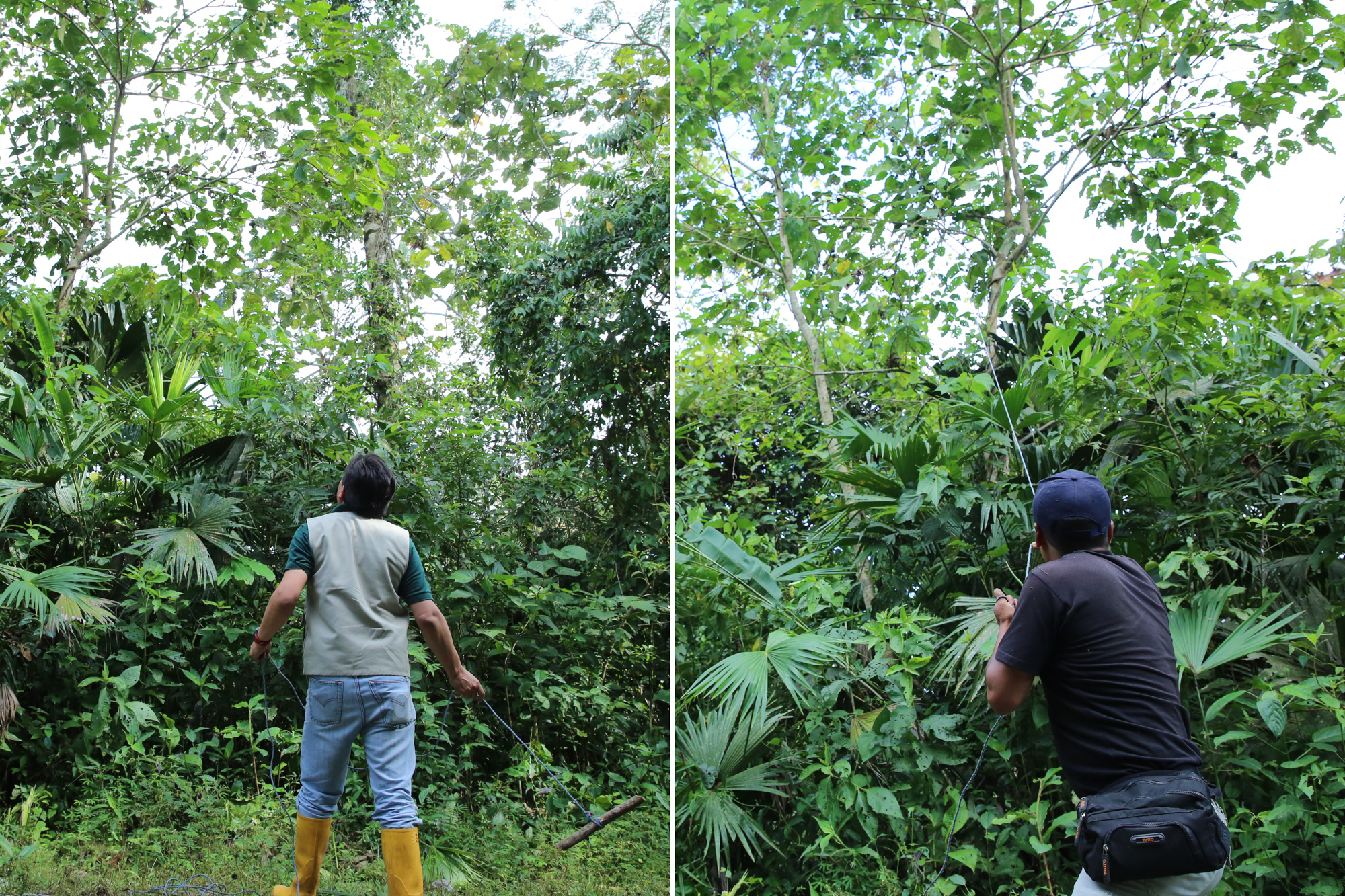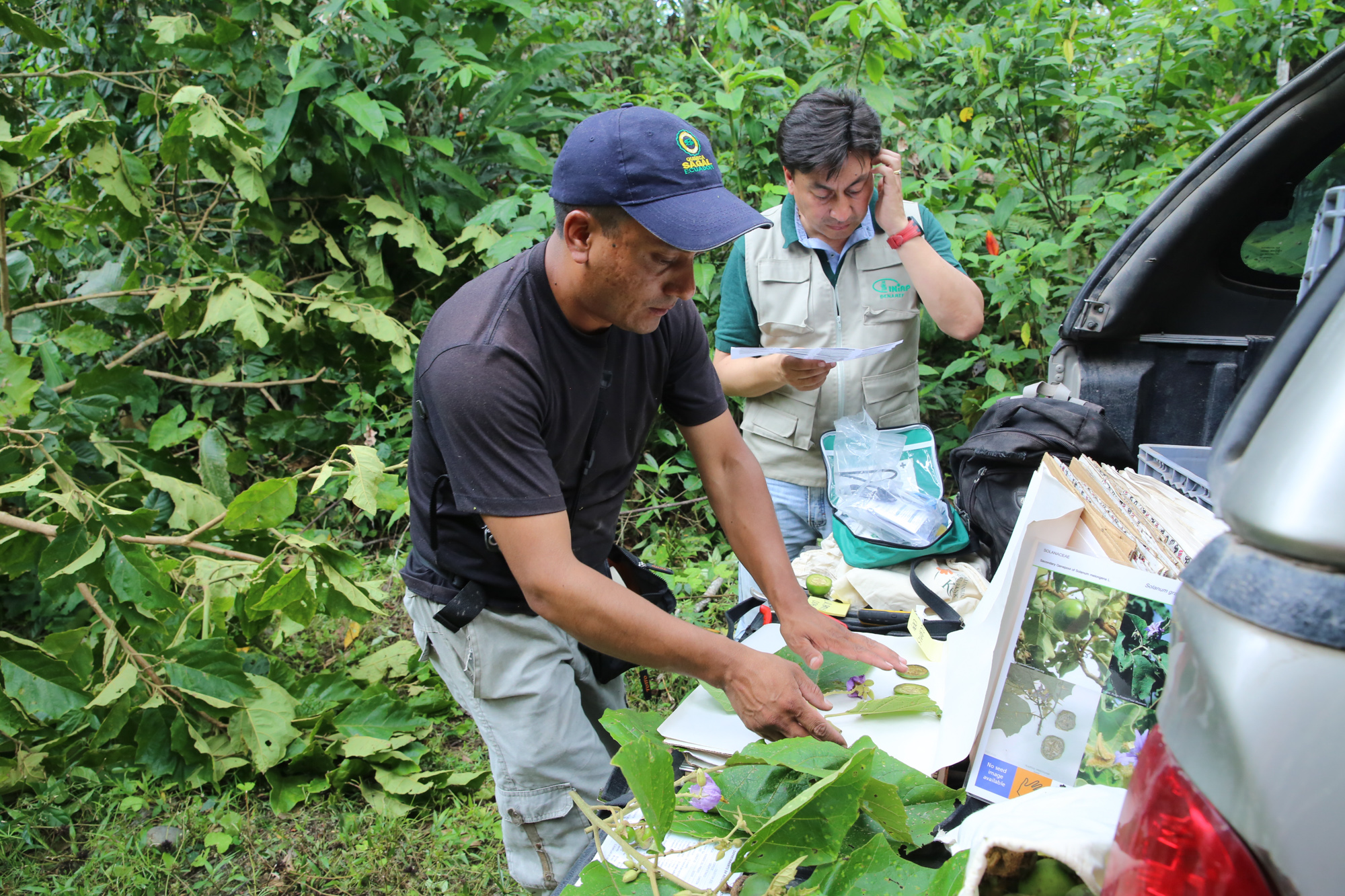-
Since May 2017, seed collectors from the Instituto Nacional de Investigaciones Agropecuarias (INIAP) have been crisscrossing Ecuador, painstakingly searching for the wild relatives of five food security crops. Solanum grandiflorum, a wild relative of eggplant, is but one of 17 “wild cousins” they have had in their sights.
-
The CWR Project supports the collecting of these plants for some of their unusual traits, which the domesticated versions have lost and could help them adapt to climate change.
-
So it came as a welcome surprise when, prior to my November 2017 trip to Ecuador, I was informed that farmers in the central region of the country were actually using some of these wild species directly.
I wanted to know more.
-
Dispatches From Ecuador
Part 2: Farmers Using CWRText and photos by LM Salazar
-
It all began with a Skype call: Lenin, one of the seed collectors, was explaining the week-long expedition’s program — the planned routes and the places we would be visiting in search of crop wild relatives.
What initially caught my ear was something he mentioned in passing:
-
Farmers are using Solanum grandiflorum as rootstock in their fields of “naranjilla” (Solanum quitoense), a native fruit of the Ecuadoran and Colombian Amazon region.
Could we visit these farmers? I asked.
-
Day 2. It’s 5:30 am. The sky is still dark. The roads empty. We are driving from the city of Tena up the highway to the Andes, back from where we’d come from the previous day.
Long hours through winding, lonely roads is part of the seed collecting experience. This morning it will take us three hours to reach our first destination: Pacto Sumaco.
-
Established in 1987 by the survivors of an earthquake that shook the region, this small agricultural community — a collection of wooden houses weathered by time – sits on the slopes of the Sumaco volcano.
Here, farmers grow tree tomatoes, coffee or oyster mushrooms. Some have cattle too. Others dabble in rural tourism. But the central economic driver here is the production of “naranjilla”.
-
The Incas called it lulum.
“Naranjilla” is a delicate fruit; it grows better under shade, and is hard to transport. Most Ecuadorans buy it to make juice, though there is a sweet variety used as table fruit in Ecuador, the #1 exporter of fresh lulo.
-
So where to begin? We do as seed collectors do: we talk to the locals, until finally, after a back-and-forth conversation from our vehicle’s window to a porch, Orteguita, our soon-to-be-guide, walks towards our pick-up truck and jumps in.
-
We soon find ourselves walking among the trees of a naranjilla plantation, where I am informed that nematodes — or roundworms — are the principal enemy of the naranjilla farmers.
-
“It’s too costly for them to treat their soils with nematicides, so farmers simply abandon their plots after the first harvest,” Lenin tells me. “It’s easier and cheaper for them to walk into the forest, clear the land, and populate it with new naranjilla trees.”
-
This of course destroys the natural habitat. But surprisingly, Solanum grandiflorum, being resistant to nematodes, is helping to curb the agricultural expansion that is destroying forest reserves here at an alarming rate.
-
Apumpo, Fake Naranjilla or Wild Naranjilla.
In the region, S. grandiflorum is known by all of these names. Native to the Amazon basin, found in Bolivia, Brazil, Colombia, Ecuador and Peru, it is an evergreen tree with large, lobed and prickly leaves, and fragrant flowers that change their colour from white to pink to lavender.
-
In Pacto Sumaco, those farmers wanting their “naranjilla” plantations to produce fruit beyond the first year are “grafting” the roots of S. grandiflorum to their “naranjilla” plants.
-
Grafting is a horticultural technique whereby tissues of plants are joined together so as to continue their growth together. The upper part is called the scion; the lower is called the rootstock.
-
Farmers and scientists use this technique for a variety of reasons, including winter hardiness and pest resistance. Here, it is mostly used to prevent root rot that comes about in “naranjilla” trees due to nematodes in the soil.
-
Germánico Ruíz (pictured here) is one of two people in Pacto Sumaco who actually does the S. grandiflorum rootstock grafting. He sells each plantlet at USD 1.00.
But not all varieties can benefit from grafting and the use of S. grandiflorum as rootstock. There are at least three “naranjilla” varieties being grown in here, Germánico tells me.
-
As I listen to him, I scribble quickly in my notebook: (1) “Palora”, a very fleshy and high yielding variety; (2) “Hybrid”, smaller, less fleshy but more juicy; requires more work in the field; and (3) the “Quitoense”, used mostly to make juice.
Out of the three, the “Quitoense” is the only one that can benefit from this grafting practice.
-
Leaving the plantation plots behind us, we head back to the village. On the main road, next to a truck parked with its back doors open, Alex Trujillo (pictured here) is hammering the tops of naranjilla boxes.
Alex and his family grow “Palora”. They harvest fruit every Tuesday and Saturday, in anticipation of the produce buyers’ visits.
-
This being a Tuesday, one of the buyers is here, filling his truck to the rim — 300 boxes of Naranjilla. He stands. He sits. He waits for Alex to finish the boxes.
-
As we walk back to our vehicle, Orteguita says: “There are too many middle-men like this guy who take 70% of the profits from our harvest. We want those earnings to reach directly the members of our community.”
But for these small-scale farmers living this far away from everything, the direct selling of their produce is, sadly, a long shot.
It is now 10 a.m. We thank Orteguita and are soon back on the road.
-
Sweet Potato & Chicha.
We are now heading to the Quichua town of Villano (Spanish for villain), in the Archidona region.
In Villano, some folks use Ipomoea ramosissima, a wild relative of sweetpotato, to make their “chicha”, an indigenous Latin American alcoholic beverage.
-
Consumed from El Salvador and Nicaragua down Brazil and Argentina, chicha is made by chewing and spitting its main ingredient, which is usually cassava or corn. The saliva accelerates the fermentation process — starches turns into simple sugars which are then converted by bacteria and wild yeast into alcohol (children drink unfermented chicha).
-
It’s 13:30. José Chimbo (pictured here) welcomes us to his house. In his garden, he grows both wild and domesticated sweetpotato – for family consumption. But not as food.
-
“Only for chicha,” says Chimbo. He explains to me that they grind these tubers, along with cassava, and use the starchy mix to make their chicha. “This is the way our grandparents used it.”
Unfortunately, (or maybe fortunately) on my visit, the Chimbos had just ran out of chicha.
-
“INIAP has approximately 850 accessions of sweetpotato,” says Lenin. “Mostly domesticated varieties”.
The national collection is safeguarded at the Pichilingue Station, located in the Coastal region of the country, where sweetpotato is eaten by the local people, or Costeños.
-
The Ipomoea ramosissima collected by Lenin here in Villano will soon be part of that collection. Samples will also be sent to the Millenium Seed Bank, Kew, where they’ll be made available to international researchers.
-
We are soon back on the road, heading to Puerto Napo, where, according to the research Lenin carried out prior to the expedition, S. grandiflorum had previously been found to be growing.
-
Most wild relatives I had seen before were scraggly, little plants. Weeds, is how I’ve heard some farmers described them. But the S. grandiflorum is a tree. A big tree, with a solid, thorny trunk.
The search continues. No luck. We move on.
-
Side note: in October 2016, I joined the Guatemalan Institute of Science and Technology (ICTA) team on a collecting mission, and they too were searching for wild relatives of the eggplant.
-
Pictured here, the ICTA team prepares a Solanum torvum herbarium specimen. Accompanying them is my colleague Hannes Dempewolf, Senior Scientist and Head of Global Initiatives for the Crop Trust.
Additionally, our collecting partners in Ghana, Nigeria, Pakistan, Nepal, Vietnam, Malaysia, Uganda, Ethiopia, and Sudan, are all searching for wild eggplant too.
-
Back in Ecuador… We reach the Misahualli region, 30 kilometers from Puerto Napo.
According to Lenin’s map, “the collecting point was in that hamlet we just passed — next to the road,” he tells me. But all I see are small homes and gardens.
-
We move on, up a dirt road flanked by small-scale farms were cacao, maize and bananas are growing.
“There it is,” Lenin says, pointing to a wall of green in front of us. It takes me a moment to find the tree. I jot down in my notebook: 14:52 — S. grandiflorum found!
-
The S. grandiflorum specimen is tall – probably 15 meters in height. Climbing it is not an option. The collectors attempt to lasso a branch – they tie a small stick to the end of the rope and take turns throwing it up at the tree.
-
Shaking the branches proves useless; even the empty shells of the round rotten fruit cling on. The only possible solution left: bend down the branches.
-
It takes a long, long time. Countless throws of the rope, and the two collectors pulling at it in unison and with all their might.
-
Perseverance pays off and they eventually collect the S. grandiflorum fruit. They then prepare the herbarium specimens and fill out all the collecting data.
“You have witnessed the last collection we will make of a S. grandiflorum,” Lenin tells me with a big smile. “With this specimen, we have now reached the required number of collecting samples.”
-
As we jump back in the pick-up truck, I look at the clock on the dashboard and make one last notation in my notebook:
17:20 – Success. The last of the grandiflorums! Heading back — to Tena, to the hotel. Tomorrow we’ll search for rice wild relatives.
